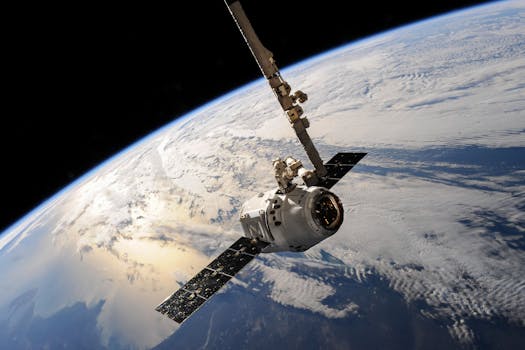MEO Satellites: Revolutionizing Global Communication with Medium Earth Orbit Technology – MEO Satellites

MEO Satellites: Revolutionizing Global Communication with Medium Earth Orbit Technology – MEO Satellites
Medium Earth Orbit (MEO) satellites are a type of satellite that operates in an orbit between 2,000 and 36,000 kilometers above the Earth’s surface. This orbit is higher than Low Earth Orbit (LEO) satellites but lower than Geostationary Orbit (GEO) satellites. MEO satellites are designed to provide a balance between the benefits of LEO and GEO satellites, offering faster and more reliable connections for global communication.
MEO satellites have several advantages over other types of satellites. They have a wider coverage area than LEO satellites, which means they can serve more users with fewer satellites. They also have a lower latency than GEO satellites, which means they can provide faster and more responsive connections. Additionally, MEO satellites are less affected by atmospheric interference and signal degradation, resulting in a more stable and reliable signal.
One of the main applications of MEO satellites is in the provision of satellite broadband services. Companies such as O3b Networks and SES are using MEO satellites to provide high-speed internet connectivity to remote and underserved communities around the world. These services are particularly useful in areas where fiber optic cables are not available or are too expensive to install.
MEO satellites are also being used for navigation and timing applications. The European Space Agency’s Galileo constellation, for example, uses MEO satellites to provide location and timing information to users across the globe. This information is essential for a wide range of applications, including aviation, maritime, and land transportation.
In addition to their use in satellite broadband and navigation, MEO satellites are also being explored for use in other applications such as Earth observation and space exploration. Their unique orbit and capabilities make them an attractive option for scientists and researchers who need to collect data from space.
In recent years, there has been a significant increase in the number of MEO satellite launches, driven by the growing demand for satellite-based services. This trend is expected to continue in the coming years, with many companies and organizations planning to launch new MEO satellite constellations. As the technology continues to evolve, we can expect to see even more innovative applications of MEO satellites in the future.
Overall, MEO satellites are playing a vital role in revolutionizing global communication and navigation. Their unique combination of coverage, latency, and stability makes them an attractive option for a wide range of applications, from satellite broadband to navigation and beyond. As the demand for satellite-based services continues to grow, it is likely that MEO satellites will play an increasingly important role in shaping the future of global communication.
In conclusion, MEO satellites are a type of satellite that offers a balance between the benefits of LEO and GEO satellites. They have a wide range of applications, including satellite broadband, navigation, and Earth observation. With their unique orbit and capabilities, MEO satellites are transforming the way we communicate globally, providing faster and more reliable connections for users around the world.



